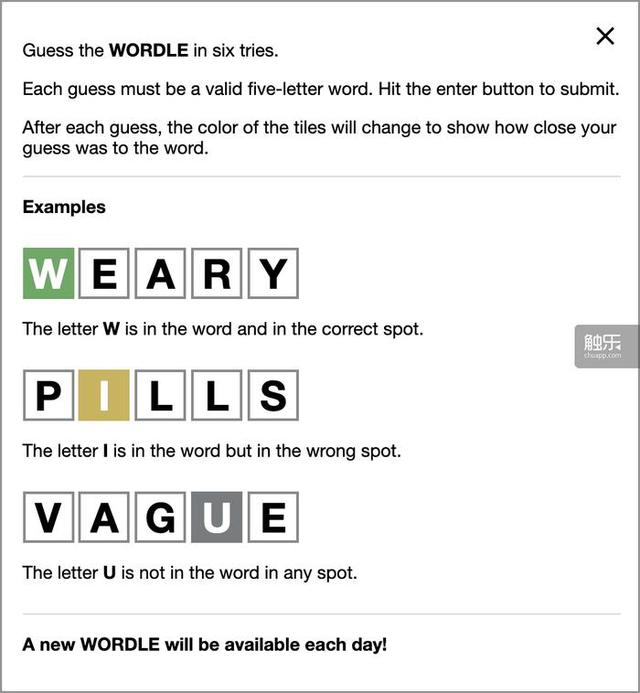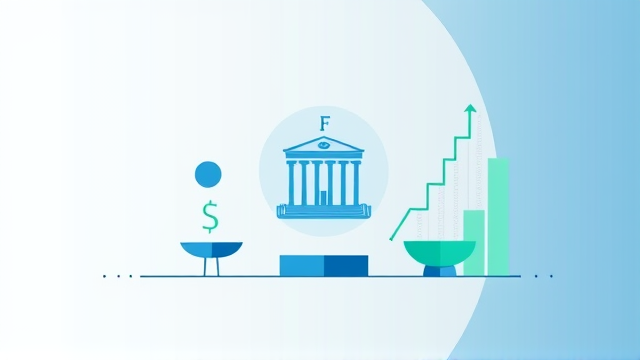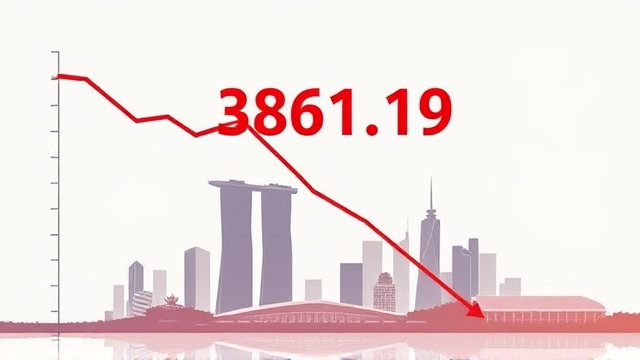原创译文|2018年区块链将如何发展?

转载声明:本文为灯塔大数据原创内容,欢迎个人转载至朋友圈,其他机构转载请在文章开头标注:“转自:灯塔大数据;微信:DTbigdata”
导读:上一期学习了对话式人工智能的相关介绍,今天我们来了解一下关于区块链的相关介绍(文末更多往期译文推荐)

如果说我在过去两年里在加密货币世界意识到了一件事,那就是这个行业的情况变化如此之快,任何人都应感到谦卑。任何说知道他在说什么的人,其实都不一定知道!
不过,现在是元旦,那又如何?我会对2018年做出12个预测:
1.Ripple会失去光泽
人们会意识到Ripple(Ripple是一个开放的支付网络)是一项很酷的业务,但它实际上并不需要协议令牌来工作。还有许多其他协议(包括一些非常高的市值协议)也不需要令牌来工作。市场将开始淘汰他们。也就是说,由于Ripple提供的服务,它将是一个有价值的公司。这不会是一个有价值的协议。协议倍数高得多。
2.闪电网络将面临巨大的考验
或者闪电将起作用,比特币将重新成为世界上默认的密码硬币,或者它将败得很惨,比特币将继续作为一种重要的硬币越来越落后。如果出现这种情况,比特币现金将成为“真正的”比特币。
对我来说,这是在玩掷硬币。在这一次的比赛中,我出售了很多我的BCH(BCH是编码理论尤其是纠错码中研究得比较多的一种编码方法),认为SegWit2x(比特币Segwit2X是比特币[BTC]的重新硬分叉)会发生,但当它支持BTC时,证明我错了。
3.当人们意识到假名和匿名的差异时,隐私大战将开始
当他们这样做的时候,竞争将会因为采用“隐私货币”而加剧,像:
zcash :第一个开放的,无需权限的加密货币
monero:门罗币,基于新数字环签名的一种数字货币(这似乎是黑暗网络上的隐私硬币)
dash具有惊人的市场营销能力( Amanda b .Johnson可能是该行业中最优秀的),但对于一些领导者团队的声望、在主节点设置中的弱点,甚至可能涉及法律问题,都有很多疑问。
PIVX有一个有趣的团队,而且速度非常快,可以与Slack(是集合聊天群组、大规模工具集成、文件整合、统一搜索功能为一体的社交应用)集成。
我预计这些硬币中的一两个将被主流媒体视为下一代比特币。这里有很多因素决定着能否成为胜利者,但我认为这取决于谁的安全意识更强。在几次大规模侵袭之后,我们才会知道。
4.数据访问对象市场将腾飞
目前由Aragon、colonity、distack0x和DAOStack等公司主导的数据访问对象市场将很快推出一些概念验证数据访问对象。听到他们在设置时间、用户基础、活动类型/运行中的数据访问对象等方面报告的度量标准将是有趣的。这些协议有着巨大的机会,尽管在这个市场上的愿景可能远远领先于技术。
如果2018年有50个左右的合法项目在试点,那么这个行业的发展速度就很快。
5.更多分散的人工智能初创企业将会出现
上个月,基于区块链的人工智能服务初创公司奇点网的ICO(ICO是指企业或非企业组织在区块链技术的支持下发行代币,向投资人募集虚拟货币(一般为比特币、以太坊)的融资活动)在60秒内就卖光了,带来3600万美元的收入。在收到投资者对其价值3.6亿美元的代币的请求后,该公司设定了3600万美元的上限。之后将会出现更多像这样的ICO。由于资金吸引资金,我们将看到很多人离开谷歌和Facebook等大型科技公司的高价格人工智能工作岗位,在下一个加密人工智能协议下追求亿美元的薪资。我们可能会看到10个加密人工智能ICO,至少是5000万美元。
6.以太坊将成为标准…或者不是
到目前为止,我们都知道,CryptoKitties(CryptoKitties是一个以太坊平台上的应用,让用户可以在区块链上收集、购买、交易、繁殖不同品种的虚拟猫)使以太坊崩溃了。以太坊联合创始人VitalikButerin也知道这一点,并且非常清楚他和他的团队面临的挑战。
几周前,我有机会与Buterin和以太坊开发人员弗拉德扎菲尔( Vlad Zamfir )坐到一起,尽管我认为“Vitalik 是神童”的叙述很冒险,但我还是对我们的谈话留下了很深的印象。这两个人都很周到,善于表达,思想开放,才华横溢。要使以太坊能够处理社区所需的规模和速度,需要做大量的工作(正如我之前概述的那样),但这两个人既聪明又谦虚,他们可以做到这一点。
也就是说,由于以太坊的所有问题,其他较新的区块链(如NEM、QTUM、EOS或AION)如果不能超越平台,也有空间开始缩小差距。如果我们看到在这些平台中的任何一个平台上构建了100多个项目,我认为我们将看到以太坊竞争对手的出现。如果没有,以太坊将保持领先地位。
7.互操作性协议仍将不成熟
我支持互操作性玩家——如Polkadot, Cosmos和像Lamden和Metronome一样的新进入者——能够在不同的区块链之间实现交易和信息交换。但我认为他们还需要一段时间才能真正落地。从长远来看,它们将实现一个多块链的世界。但从短期来看,他们会增加以太坊和比特币等关键区块链的负载,因此很可能还不会从这些社区获得太多的爱。我希望他们暂时安静一点。
8.我们会看到楚格以外更多的加密谷
作为密码探险者协会的一员,我每季度都会去瑞士楚格的“密码谷”。下一个是1月29日,它已经售罄,但4月旅行的申请仍在受理中。
阿曼和巴拿马等地的政府都曾与我们接触过,他们希望在自己的地理位置上建立加密谷,并利用秘密探险者向世界介绍自己。他们研究了楚格为推动创新和创造就业所做的工作,他们希望自己能做到这一点。
这告诉我,二三线地区的政府将区块链/加密视为一种“跨越”一级经济体的方式,就像爱沙尼亚在上世纪90年代所做的那样,直接进入数字化第一国家。
这些新的加密谷将尝试成为区块链优先位置。我想我们会看到他们中的两三个成功。我不是在谈论迪拜、新加坡、特拉维夫或柏林。我说的是一些意想不到的地方,比如布拉迪斯拉发、弗洛里亚诺波利斯、巴拿马城和马斯喀特。
9.加密将成为主流
美国前十大零售经纪商中的三家将允许你直接从他们的网站上购买1 -5种加密货币,就像你今天使用股票或共有基金一样。coinbase是目前最受欢迎的密码新用户交换平台,目前只支持四种货币。除非它想开始失去基地,否则它将需要改善其基础设施,执行一项统治世界的计划。
10.ICO将成为主流
我认为我们将看到第一个合法的ICO发生在Indiegogo,2月份或最迟3月份。我预计,在这一年中,我们将至少再看到9个国家,2018年的总数将达到10个。
11.反向ICO将加剧
Kik做了第一个反向ICO;现在YouNow即将做一个。我认为2018年我们将看到至少15 -20个反向ICO。“反向ICO”是指现有公司下放权力并向其成员发放代币以刺激循环经济。这与来自全新启动项目的ICO不同。所有这些活动都需要新型的专业人员——标志化顾问——所以我们也希望在2018年也能看到这种作用。
12.监管将变得更加严格
我谨慎乐观地认为,美国当局将相对宽松地对待区块链初创企业,以免阻碍创新。但疏忽大意或完全欺骗性的公司将被关闭。ICO必须遵守KYC /AML政策,其解决方案也必须扩展。如果你看一下12月12日SEC主席Jay Clayton的来信,他非常清楚加密创新的重要性,他值得被赞扬。但他也正在把注意力放在分散的项目上,从根本上说,说对法律的无知并不是一种辩护。我认为这是一个健康的平衡。
原文
12 changes that could shake up the blockchain world in 2018
If there is one thing I have learned in the last two years in the cryptocurrency world, it’s that things change so quickly in this sector, it can humble anybody. Anyone who says he knows what he is talking about, doesn’t!
Still, it’s New Year’s Day, so what the heck? I’ll put my neck out there with 12 predictions for 2018:
1. Ripple will lose its luster
People will realize that Ripple is a cool business but that it doesn’t actually require a protocol token to work. There are a number of other protocols (including some VERY high market cap ones) that also don’t require a token to work. The market will start to weed them out. That said, Ripple will be a valuable company because of the service it provides. It just won’t be a valuable protocol. The protocol multiples are much higher. Disclosure: I previously owned XRP, but don’t hold any now.
2. The Lightning Network will face the big test
Either Lightning will work and Bitcoin will regain its prominence as THE default cryptocoin in the world, or it will fail miserably and Bitcoin will continue to fall further and further behind as a coin of relevance. If that happens, Bitcoin Cash becomes the “real” Bitcoin.
To me, it’s a coin toss. I’m playing catchup on this one as I sold a lot of my BCH when it came out in favor of BTC, thinking SegWit2x would happen, but I was wrong. Ouch.
3. The privacy wars will begin as people recognize the difference between pseudonymity and anonymit
When they do, the competition will intensify for adoption of a “privacy” coin like
Zcash (disclosure: They’re a client and I’m biased)
Monero (which seems to be the privacy coin of choice on the Dark Web).
Dash has amazing marketing (Amanda B. Johnson is probably the best in the business) but questions abound about the reputation of some of the leadershp team, weaknesses within the masternode setup and possibly even legal implications.
PIVX which has a fun team and is really fast plus can integrate with Slack.
I predict that one or two of these coins will be recognized as the next Bitcoin within the mainstream media. There are a lot of factors here that will determine the winner, but I it will come down to whose security mentality is superior. We’ll only know that after a few big attacks.
4. The DAO market will take off
The DAO market, currently led by companies like Aragon, Colony, District0x, and DAOStack — will soon have a few proof-of-concept DAOs running. It’ll be interesting to hear the metrics they report in terms of set up time, user base, types of activities/DAOs in operation, etc. These protocols have massive opportunity (as I wrote previously on VentureBeat), though the vision in this market may be way ahead of the tech.
If there are 50 or so legit projects in pilot in 2018, then this sector is on a fast pace. I’m planning a pilot DAO of my own, by the way, so I’ll be updating readers about what the process looks like from the inside.
5. More decentralized AI startups will emerge
Last month, blockchain-based AI-as-a-Service startup SingularityNet’s ICO sold out in 60 seconds, pulling in $36 million. It set the $36 million cap after receiving requests for $360 million worth of its tokens from investors. There will be more ICOs like this one. Since money attracts money, we will see a lot of people leaving high priced AI jobs at big tech firms like Google and Facebook to pursue billion-dollar paydays at the next crypto-AI protocol. We will probably see 10 crypto AI ICOs that are at least $50 million. For more on decentralized AI, see my earlier article here.
6. Ethereum will be the standard … or not
By now, we all know that CryptoKitties brought the Ethereum network to its knees. Ethereum cofounder Vitalik Buterin knows it too and is very aware of the challenges he and his team face.
I had the opportunity to spend time with Buterin and Ethereum developer Vlad Zamfir a few weeks ago, and — although I think the “Vitalik as Wunderkind” narrative is dangerous — I walked away from our conversation very impressed. These two are very thoughtful, articulate, open-minded, and brilliant. There are a ton of things that need to be done to prepare Ethereum to handle the scale and speed the community will need (as I have outlined before), but these two are both smart and humble enough that they could do it.
That said, with all of Ethereum’s issues, there is room for other, newer blockchains like NEM, QTUM, EOS, or AION to start closing the gap, if not overtake the platform. If we see more than 100 projects built on any one of those platforms, I think we’ll be seeing the emergence of an Ethereum contender. If not, Ethereum will keep its hold on the lead.
7. Interoperability protocols will remain immature
I’m rooting for interoperability players — like Polkadot, Cosmos and new entrants like Lamden and Metronome — that will enable transactions and information exchanges between different blockchains. But I think it will be a while before they really get off the ground. In the long term, they’ll enable a multi-blockchain world. But in the short term, they’ll increase the load on key blockchains like Ethereum and Bitcoin and so won’t likely get much love from those communities just yet. I expect them to be a bit quiet for the time being. For more on this sector, see my earlier story.
8. We’ll see more Crypto Valleys beyond Zug
I lead a quarterly trip to “Crypto Valley” in Zug, Switzerland as part of the Crypto Explorers Association. The next one is January 29, which is sold out, but applications are open for the April trip. See the site for details.
We’ve been approached by governments in places like Oman and Panama that want to set up Crypto Valleys in their geographies and use CryptoExplorers as a way of introducing themselves to the world. They have studied what Zug has done to drive innovation and job creation and they want to do that themselves.
That tells me governments in tier 2 or tier 3 locations see blockchain/crypto as a way to “leapfrog” tier 1 economies in the way Estonia did in the 1990s, going straight to a digital first country. (You can read about my experiences as an e-citizen of Estonia here.)
These new Crypto Valleys will try to become blockchain-first locations. And I think we will see two or three of them make it. I’m not talking about Dubai, Singapore, Tel Aviv, or Berlin. I’m talking about unexpected places like Bratislava, Florianopolis, Panama City, and Muscat.
9. Crypto will go mainstream
Three of the top 10 retail brokers in the U.S. will allow you to buy 1-5 cryptocurrencies directly from their websites, just as you do today with stocks or mutual funds. Coinbase, currently the most popular exchange for crypto newcomers, only supports four currencies at the moment. Unless it wants to start losing ground, it will need to improve its infrastructure and execute a plan for world domination.
10. ICOs will go mainstream
I think we will see the first legitimate ICOs take place on Indiegogo in February, or March at the latest. I predict that, over the course of the year, we will see at least nine more, for a total of 10 in 2018. (Here is Indiegogo’s original announcement.)
11. Reverse ICOs will intensify
Kik did the first reverse ICO; now YouNow is about to do one. I think we’ll see at least 15-20 more reverse ICOs in 2018. A “reverse ICO” is when an existing company decentralizes itself and issues tokens to its members to stimulate a circular economy. This is as opposed to a ICO from a brand new startup project. All this activity will require the services of a new type of professional — the tokenization consultant — so expect to see that role catch on in 2018, too. For more on reverse ICOs, see here.
12. Regulation will get more serious
I’m cautiously optimistic U.S. authorities will be relatively lenient on blockchain startups so as not to impede innovation. But companies that are negligent or outright deceptive will get shut down. ICOs will have to adhere to KYC/AML policies, and their solutions will have to scale. If you look at SEC Chairman Jay Clayton’s letter from December 12, he is pretty clear about the importance of crypto-innovation, and he deserves credit for that. But he is also putting decentralized projects on notice, saying essentially that ignorance of the law is not a defense. I think this is a healthy balance.
文章编辑:天天






















评论